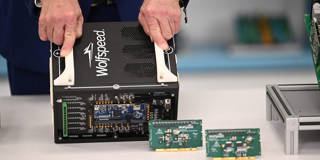
From Trade War to Subsidy War
Instead of lifting Donald Trump’s trade barriers, US President Joe Biden has fully embraced industrial policy, offering massive subsidies to domestic manufacturers. Although this might enhance manufacturing capacity in the short term, it also risks triggering a financially draining global subsidy war with no clear winners.
LONDON – To the dismay of many economists, US President Joe Biden’s administration has retained most of its predecessor’s tariffs and trade barriers. In fact, contrary to most analysts’ expectations, the United States has imposed additional protectionist measures, such as Biden’s “buy American” policies, resulting in higher costs for American consumers and taxpayers.